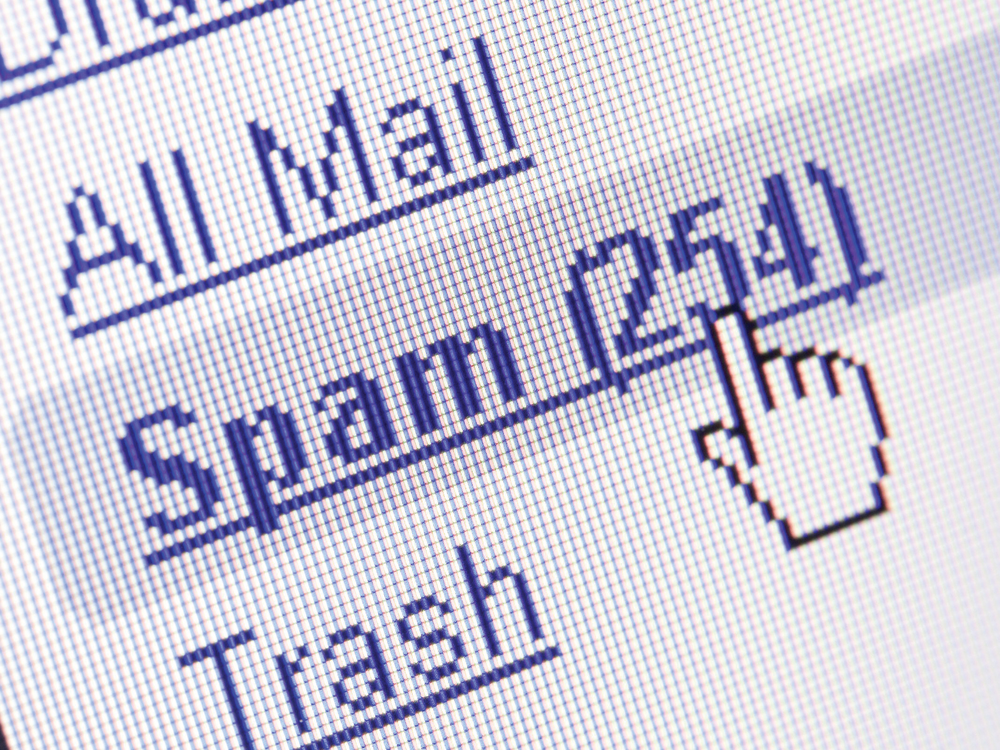6 Simple Tips for Decreasing Spam & Phishing Emails
How many email addresses do you have or do you manage? You certainly have at least one for work, hopefully with your firm name as a part of the email address...
Oct. 10, 2012

How many email addresses do you have or do you manage? You certainly have at least one for work, hopefully with your firm name as a part of the email address, but you may also be the person that info@firmname.com emails, or other variations, go to.
Then, you also have at least one personal email address, but possibly more than that. Off the top of my head, I have at least 14 email accounts. I’m not saying that I have to manually go and check 14 different accounts, since several of these email addresses are associated with my role as editor of this publication and are routed into my primary email account in Outlook.
Why so many work email addresses? Well, we have default corporate accounts, and then we get to choose more easily usable addresses (like firstname@company.com), and our magazine also has special topics throughout the year (such as our 40 Under 40, Readers Choice Awards and Innovation Awards) that are easier to manage with separate email addresses. Once again, they actually come into one singular account, so they can be managed pretty simply with a few Outlook rules. (I give a few pointers below.)
I also have at least six email accounts, however, that are either personal or related to my LLC or a various side project. Many of the tax and accounting professionals I meet have entities other than their practice, such as our own executive editor, Darren Root, who runs his accounting firm, the separate RootWorks consultancy, and also guides our editorial processes. As such, he has at least one email account for each of these entities (probably more than that), as well as personal email accounts.
As for my accounts, most of them feed into my personal computer’s Outlook Express, but I also have access to them online and from my mobile devices. I could probably let go of a couple (like the Yahoo! email I’ve had since 1996), but I have a sort of fondness for the old account. It is pretty much unusable these days due to spam, but I do keep it active and use the account occasionally when signing up for things online.
Your Email Name Reflects Your Brand
This may seem excessive, particularly to professionals with only two or three total email addresses, but it’s partly process driven, and also to protect the different brands of each activity. Having your company/firm name in your email is essential, because it reinforces branding, whereas using a generic free email account (like Yahoo! Or Gmail) simply looks unprofessional.
While every firm should have a website that reflects its brand, those who don’t can still get personalized firm email addresses that reflect your practice name. Several vendors offer this option (Google the phrase “personalized email”), but another more professional option is offered by CPA2Biz, the business arm of the AICPA.
Their CPA.com Email Solutions, which won a 2012 Innovation Award, offers two options: Full email with send and receive capabilities, or an account that receives emails and forwards them to whatever existing email you currently have. Both options allow the user to select their address (such as Your_Firm@CPA.com). The Forward-Only version is under $30 per year, the full account is less than $100 per year.
Quick Tips to Keep Spam Manageable
There are many ways to try to manage spam, but the ones I’ve found most useful are:
1) Do not use the Auto Reply feature when Out-of-Office. It confirms to spammers that your email address is valid, making it more valuable and it will be sold to many more spammers.
- Also- For those who have a solo practice or a home office, overly detailed out-of-office messages (like: I’ll be on vacation between Nov. 20-26th) can tell potential thieves the best time to visit. So, if you choose to use auto-reply, at least be vague.
2) Do use other email tools. In addition to back-end Exchange server policies usually managed by an IT person,Outlook offers several user-side rules, such as:
- Standard Rules & Alerts – Tell Outlook to automatically put emails from certain people/clients into specific folders. This can also be done for emails with specific words in the subject.
- Custom Rules – There are some words that will never be in a legitimate email (or at least not an important one). These are most often vulgarities and misspelled spam words like m0rtgage, V1agra, etc. Also, unless you have clients or friends in Nigeria, you probably won’t be getting notification of any inheritances via email. You can take all of these undesired words and tell Outlook to delete emails containing them immediately, or to put them into a special “probably spam” folder.
3) Change your email address occasionally. Simply adding the number 1, 2 , etc. to the end of your name every couple of years can dramatically reduce spam. Let your regular clients know by simply adding a note on each your outbound emails for at least 30 days in advance.
4) Don’t post your email address openly on websites. There are bots that can detect them and add them to spam lists. Try obfuscating them, like Editor (at) CPAPracticeAdvisor (dot) com.
5) Have a “throwaway” account. Use a free email account for signing up for some online offers that you think might lead to spam.
6) Don’t use “unsubscribe” links, unless you know the company. If you don’t remember signing up for what looks like spam, then using the unsubscribe link just confirms your email as valid.
* Special thanks to Jakin Heusinkveld, a member of Cygnus Business Media’s IT staff, for contributing.
